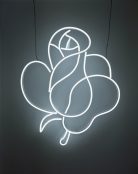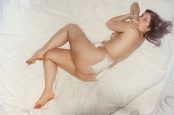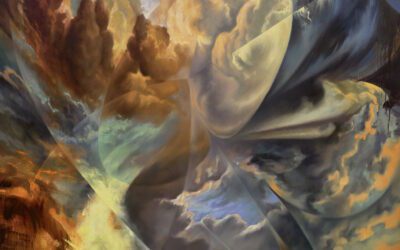Nobody personified the intersectionality of 80s music, art and fashion with greater largesse than Keith Haring (1958-1990), his work is instantly recognisable; bold-modern hieroglyphs of abstract dancing figures, TVs, turntables and UFO’s, create a modern urban symbolic language drenched in primary colours that are immediate, dynamic and familiar, conversing directly with one’s inner child.
Haring was born into a blue–collar family in Pennsylvania, the only boy of four children he was doted on by his parents. Sitting in his father’s lap he’d watch the older Haring draw cartoons, instilling both a love of illustration and comics.
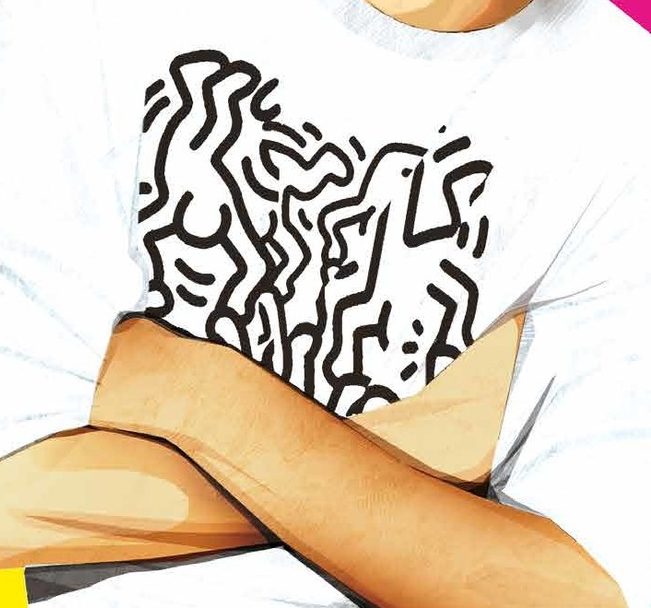
By the time he went to school he discovered he had his own superpower; like his father the young Keith had a gift for art. One of his earliest creations was an etching drawn on a long roll of paper reminiscent of the Bayeux Tapestry. An explosive representation of the ongoing battles between cops and hippies that dominated the sixties news cycle this aesthetic of propulsive, pictographic storytelling gave the developing artist a distinct direction.
“You see that’s why I work like a dog and I worked like a dog all my life. I am not interested in the academic status of what I am doing, because my problem is my own transformation.”
Keith haring
Along with his childhood friend Kermit, Haring branched out into the avant-garde and ‘vandalised’ his art college. This was guerrilla art making, temporal, irreverent with a punk aesthetic, and yet aware.
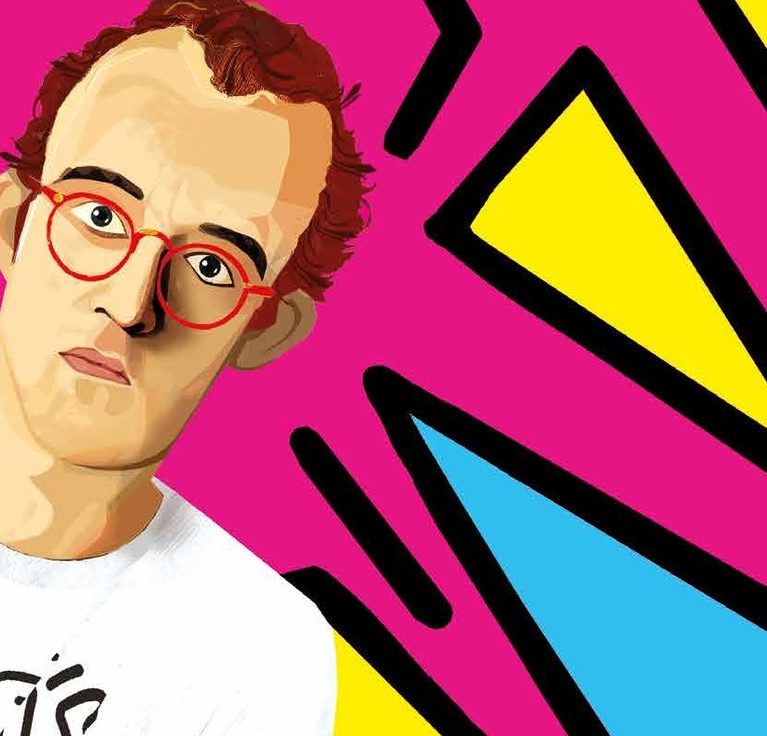
Moving to New York, these early influences combining with the urban cool of the Lower East Side gave Haring new freedoms, artistic and personal. The city manufactured a new epoch for Haring and his hitherto hidden sexuality. Rather than repressing his gay identity as he had been doing, he began a celebrity journey of experimentation and pride, a self-generative power drawn from liberation, solidarity and positive sexuality. He was out and Haring’s magic marker made the public spaces of New York his own canvas, gallery and audience.
“Art should be something that liberates your soul, provokes the imagination and encourages people to go further.”
Keith Haring
His work reflected the music and movement of the city, choreographed, whirling fresco’s that oozed cool; spinning cartoon figures and tribal markings were etched and puzzled over by early morning commuters, break dancing representations of New York street life. Haring elevated the omnipresent graffiti that covered the subway stations and trains of New York into the new ‘thing’. Haring emphasised that this was art, for and by the masses, a collective experience of individuality. Haring tapped into the zeitgeist of self-actualisation, promise and potential amongst New York’s anomie and received public love and recognition for it. He became a celebrity.
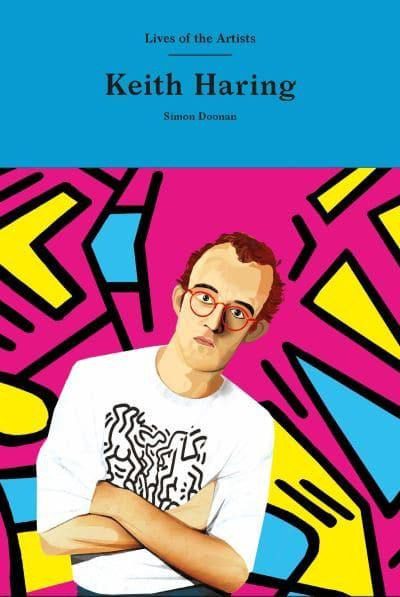
Elevated his art attracted the omnipresent Andy Warhol; who buys his work and mentors the young artist, an unsigned Madonna performs for him, he opens ‘The Pop Shop,’ selling his commercial and instantly likeable images. He is pictured with everyone from the Beastie Boys to Grace Jones, he is the cause célèbre and his life is a glamorous swirl of celebrity parties, gallery openings and happenings. But amidst the upward trend of both Haring and the city a darkness festers. In 1983 the Avant garde chanteuse Klaus Nomi dies of a mystery illness. His death is the first of many. Sweeping through the bath houses and gay clubs of the city, Aids has arrived and begins its 20-year decimation of the LGBTQI community. By the time Haring tests positive in 1988 many of his contemporaries have already passed away from the virus.
Keith Haring died of AIDS in 1990 at 32, his passing marked the end of the 1980s.
Simon Doonan’s Lives of the Artist’s book is a pocket-sized guide to the life of a giant-sized figure, a figure that radically changed the 1980s, he was the first to put art on t-shirts, yo-yo’s and Swatch Watches, renegotiating our relationship with the art world. Keith made art communal, free, and accessible to all.
Laurence King Publishing; 1st edition (18 Feb. 2021)
Images: interpolations of the Book Cover.
I write short stories and poetry alongside studying religion and anthropology at the University of Manchester. My story “Girl’s World” was in the highly recommended list for the Manchester Fiction prize 2019.



